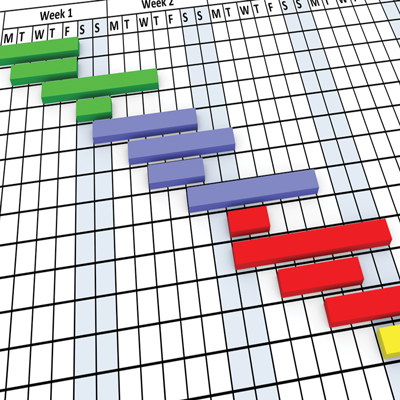The consulting firm PwC found in a 2012 study that 30% of project failures are due to a poor project plan.
This module covers:
1. The elements of a comprehensive project plan
2. How to develop realistic project estimates
3. How to consider plan inter-dependencies
4. Estimating and managing contingencies
5. Considering and planning project resources
The Critical Success Factors Of A High Quality Plan
1. Comprehensive. The plan is well structured and includes all stages, phases, tasks, and deliverables required for executing a project of this size and complexity.
2. Realistic estimates. It is human nature to be overly optimistic about what can be achieved in a given amount of time. Realistic estimates should be based on experience, modulated by project inflators or deflators which consider the project’s unique circumstances.
3. Inter-dependencies. Complex project schedules must consider the inter-dependencies between tasks and deliverables.
4. Contingencies. All project plans should allow for time and effort contingencies. Examples for contingency items include: “What if our proof or concept does not work”, “What if one or more of our lead developers leave the company or get sick”. A process for approving and tracking the use of contingencies must be included in the project plan.
5. Resources. The success of the project depends on the availability of skilled and experienced resources in a variety of areas. If the company does not have experienced in-house resources it should look to supplement its resources with outside experience resources with proven track records.
In this module you will learn how to:
a. Develop a comprehensive project plan that includes all the stages, phases, tasks, and deliverables needed to successfully execute a project of this size and complexity
b. Develop realistic effort and time estimates needed to complete all the activities of the project. This includes the use of inflators and deflators to take into consideration the unique circumstances of the project
c. Build inter-dependencies between tasks and deliverables into the project schedule
d. Estimate resource, effort, and time contingencies and the processes needed to manage these contingencies
e. Planning for the resources necessary to execute the project including the level of experience required
Browse other modules of the
Executive Project Management Program by clicking on the icons!
Please share this page with your friends and colleagues on Social Media!
Follow up on Social Media!















